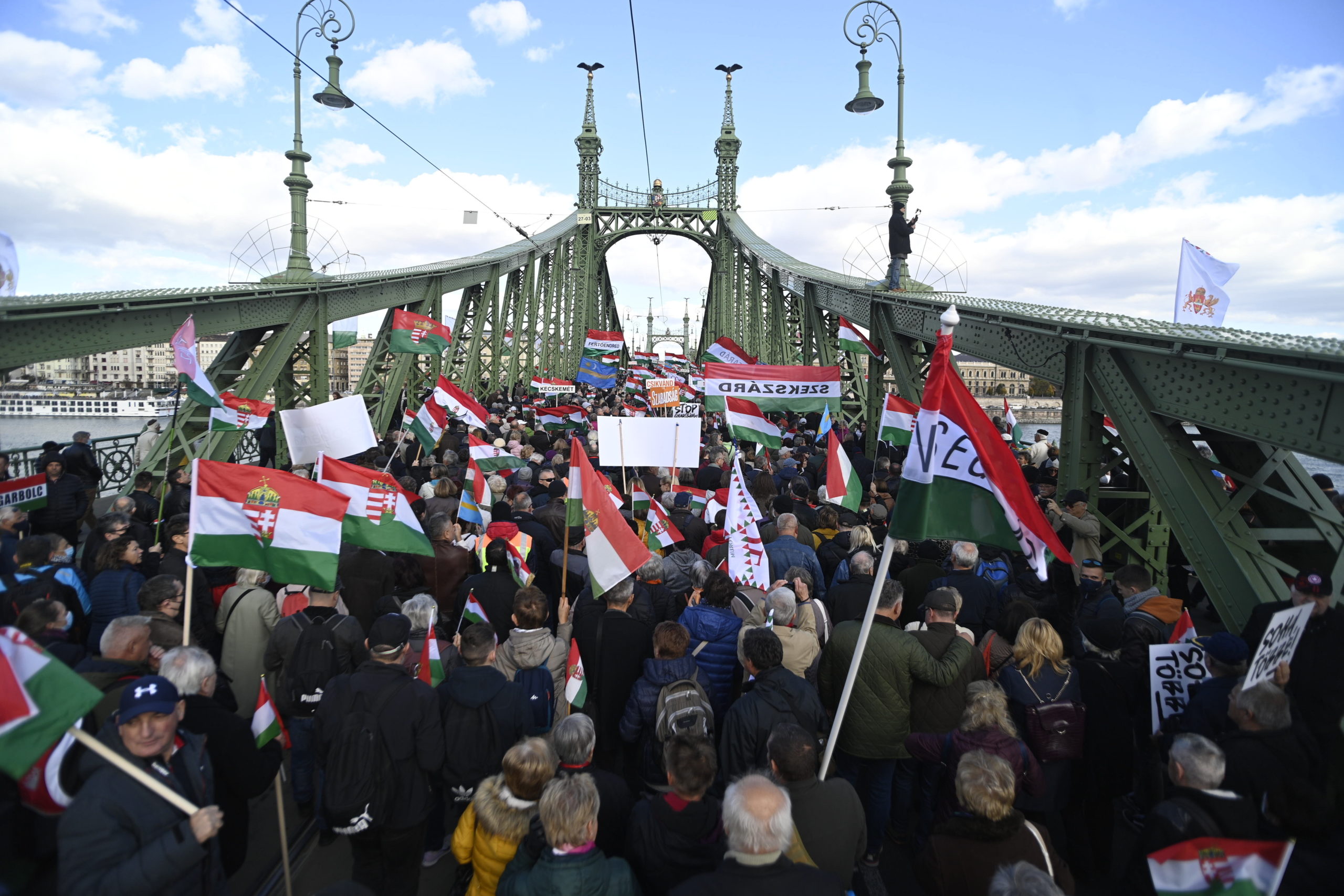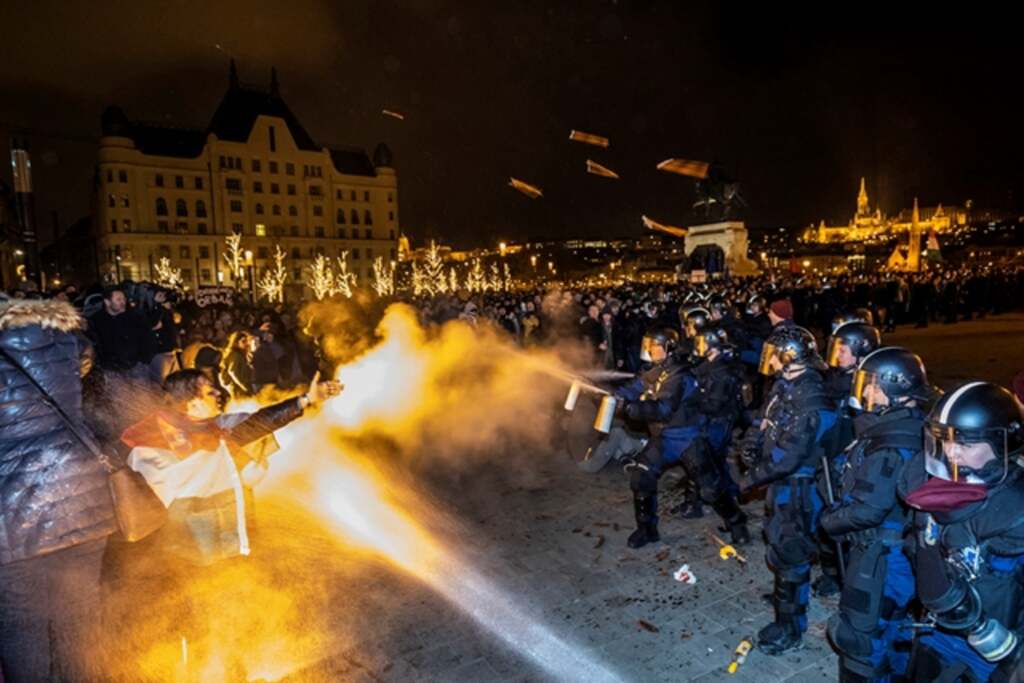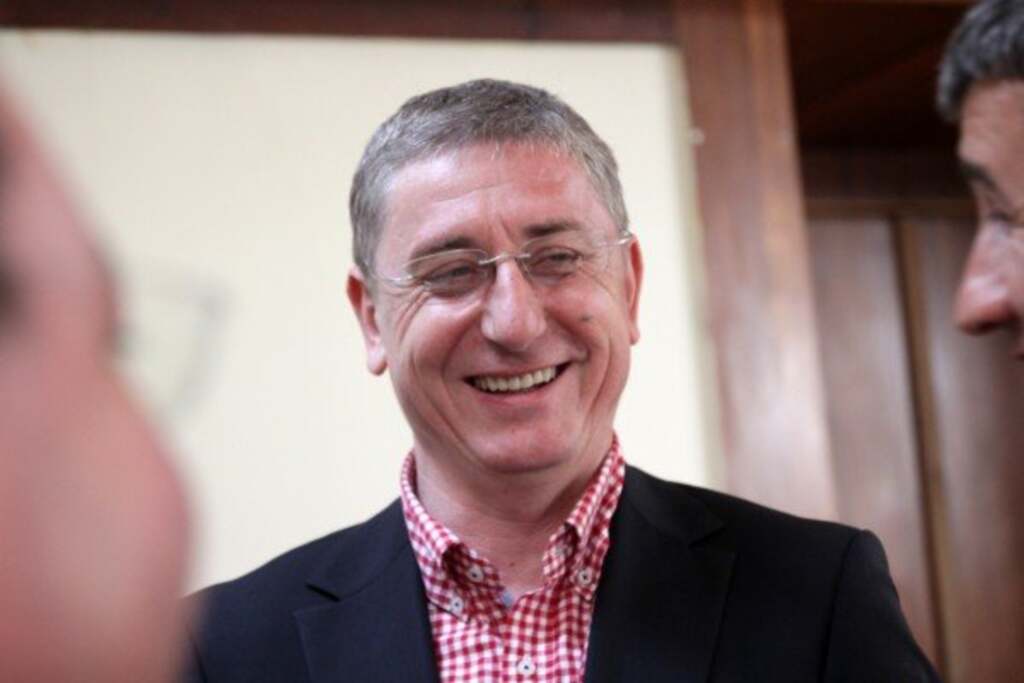
Huge crowd on capital’s streets says “Never again, stop!”
In a bid to retain his power, the Hungarian prime minister lied to the people and the EU. The incident sparked large-scale demonstrations which were brutally repressed. On the anniversary, a huge crowd is remembering these events and the 1956 Hungarian Revolution.
“I almost perished because I had to pretend for 18 months that we were governing. Instead, we lied morning, noon and night,” the premier said in his infamous “Oszod speech” which was leaked in September 2006. It revealed that in a bid to retain his power, Ferenc Gyurcsany, socialist prime minister, had lied to voters.

For several weeks after the speech was leaked, anti-government protests erupted in Budapest and other cities across the country. In October, a series of demonstrations began with hundreds of thousands of people taking part, but these were brutally repressed by police on the orders of the prime minister. Mounted police steered their galloping horses straight into crowds of demonstrators and peaceful commemorators who gathered on 23 October to mark the national holiday [honouring the then 50th anniversary of the 1956 Hungarian Revolution against Soviet oppression], and police officers without visible identification numbers indiscriminately beat and tear-gassed celebrants.
The quelling of the civil unrest left 167 people injured, 33 hospitalised, and two demonstrators permanently blind in one eye.
It was also revealed that the Gyurcsany government had also concealed the actual state of the country’s economy from the European Union. The Budapest City Court ruled that the Gyurcsany government acted unlawfully in forwarding the EU’s statistical office (EUROSTAT) in 2006 only national budget deficit figures that had previously been approved by the finance ministry. This means that since the actual magnitude of the budget deficit had been concealed from the EU’s leadership during the period preceding the national parliamentary elections, Brussels audited the convergence programme submitted by the Gyurcsany government.

Ferenc Gyurcsany
Gyurcsany fell, Brussels launched attacks on new national government
Mr Gyurcsany finally resigned in 2009, and after the change of government in 2010, Hungary began to emerge from the crisis as a result of the Orban government’s measures, however, it also came under increasing attack from Brussels.
At that time, a group of civilians decided to organise a Peace March – a large-scale demonstration in support of the government. Since then, eight Peace Marches have been organised, with hundreds of thousand of people attending, and the latest one taking place this Saturday, on 23 October, the day marking the anniversary of the 1956 Hungarian Revolution.

The crowd marched on the symbolic route of Gyurcsany’s 2006 police terror. Founder and advisory board chairman of the organiser of the event, Civil Cohesion Forum and Civil Cohesion Public Benefit Foundation (COF-COKA), Laszlo Csizmadia earlier said that “we want to demonstrate in a calm, peaceful, silent way that this is where Gyurcsany’s terror happened 15 years ago, threatening peaceful people with horse attacks, shooting at people’s eyes, breaking bones, using water cannons and steel rods. Once again blood flowed in the streets of Budapest. Democracy was mocked. The slogan of our banner in front of the march reads
Never again, stop!”
The eighth Peace March started from the University of Technology and arrived at the corner of the Andrassy and Bajcsy-Zsilinszky streets, the site of the 2006 police terror, where Prime Minister Viktor Orban is to deliver a speech.

